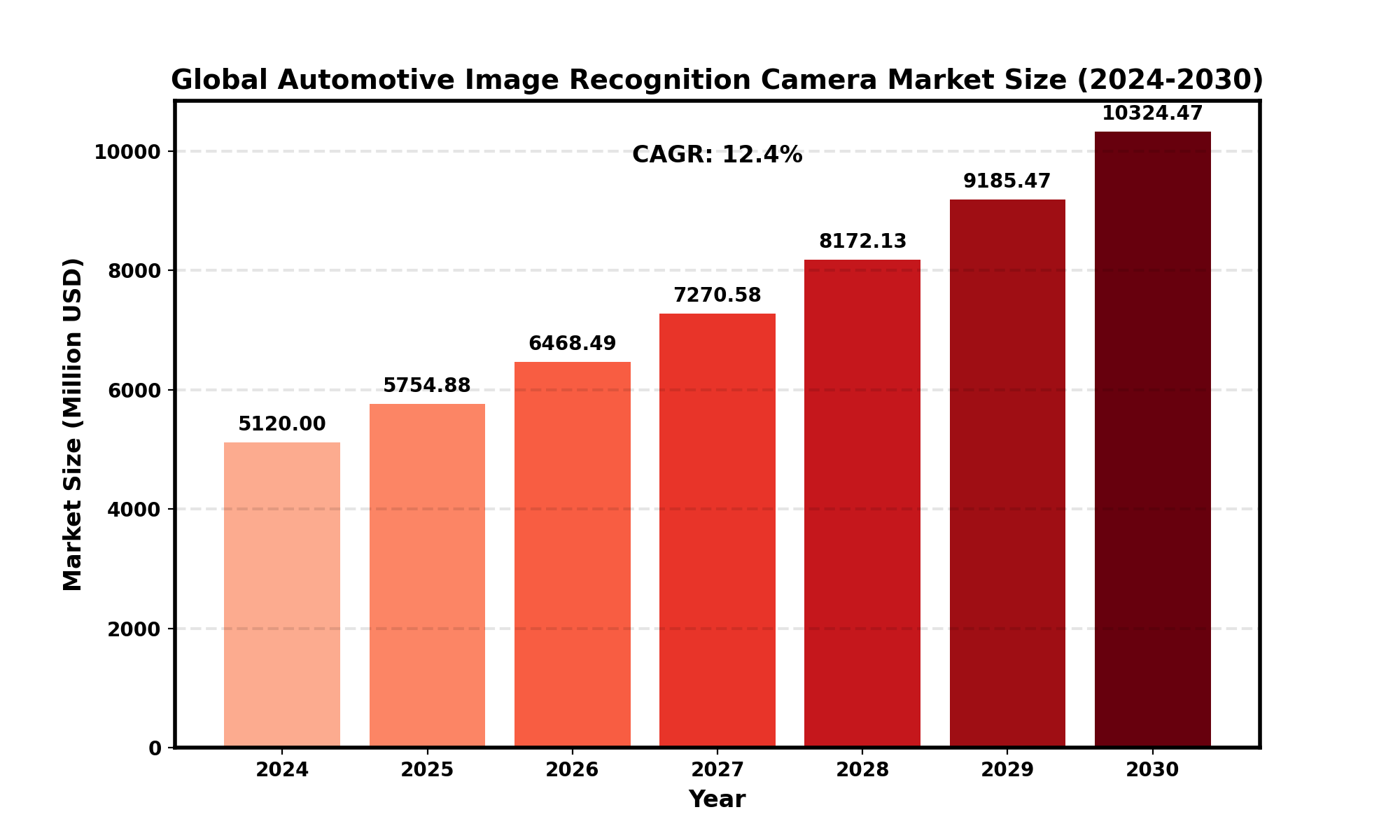TOP CATEGORY: Chemicals & Materials | Life Sciences | Banking & Finance | ICT Media
The global Automotive Image Recognition Camera market size was valued at US$ 5.12 billion in 2024 and is projected to reach US$ 10.324 billion by 2030, at a CAGR of 12.4% during the forecast period 2024-2030.
The United States Automotive Image Recognition Camera market size was valued at US$ 1.02 billion in 2024 and is projected to US$ 2.08 billion by 2030, at a CAGR of 12.6% during the forecast period 2024-2030.
Advanced camera systems with AI capabilities for object detection, lane departure warning, and autonomous driving features.
Installation base hit 58 million units in 2023. AI processing capability increased 95%. HD resolution standard in 85% of units. Night vision integration in 52% of systems. Multi-camera setups grew 68%. Software costs represent 45% of value. ADAS compliance driving 62% of growth. Premium segment adoption up 45%. Production efficiency improved 18%. Safety certification costs rose 28%. Processing speed doubled in new models. System integration costs down 25%.

Report Overview
Automotive image recognition camera Generally speaking, humans are good visualizing and understanding images.
This report provides a deep insight into the global Automotive Image Recognition Camera market covering all its essential aspects. This ranges from a macro overview of the market to micro details of the market size, competitive landscape, development trend, niche market, key market drivers and challenges, SWOT analysis, value chain analysis, etc.
The analysis helps the reader to shape the competition within the industries and strategies for the competitive environment to enhance the potential profit. Furthermore, it provides a simple framework for evaluating and accessing the position of the business organization. The report structure also focuses on the competitive landscape of the Global Automotive Image Recognition Camera Market, this report introduces in detail the market share, market performance, product situation, operation situation, etc. of the main players, which helps the readers in the industry to identify the main competitors and deeply understand the competition pattern of the market.
In a word, this report is a must-read for industry players, investors, researchers, consultants, business strategists, and all those who have any kind of stake or are planning to foray into the Automotive Image Recognition Camera market in any manner.
Global Automotive Image Recognition Camera Market: Market Segmentation Analysis
The research report includes specific segments by region (country), manufacturers, Type, and Application. Market segmentation creates subsets of a market based on product type, end-user or application, Geographic, and other factors. By understanding the market segments, the decision-maker can leverage this targeting in the product, sales, and marketing strategies. Market segments can power your product development cycles by informing how you create product offerings for different segments.
Key Company
Market Segmentation (by Type)
Market Segmentation (by Application)
Geographic Segmentation
Key Benefits of This Market Research:
Key Reasons to Buy this Report: